A short distance from Roscoe Village in Coshocton, Ohio is a pathway leads to a canal. Once a waterway where goods were transported between Lake Erie and the Ohio River, it is now a historical landmark in remembrance of the Canal Days. This fascinating piece of history measured 308 miles with 146 lift locks.
The project to build the canal (“the big ditch”) began in the 1820s, taking a decade to build. Initially connecting the city of Akron with the Cuyahoga River in Cleveland, the project expanded to include access to the town of Portsmouth along the Ohio River. The canals were an integral asset for the transportation of good until the invention of the railroad, causing its decline. In addition, the flood of 1913 resulted in absolute destruction of several areas along the canal and any plans to restore the canal systems was completely abandoned.
Sections of the Ohio and Erie Canal were placed under the management of Ohio’s Department of Natural Resources as preservation efforts were underway. Visitors today can stroll down the 1-mile towpath along the canal or board the horse-drawn Monticello III for an historical experience. The canal boat, located near Roscoe Village, is available for tours on weekends starting Memorial Day through mid-October.

Within steps from Roscoe Village is a bike path that leads under a bridge to Lock Number 27. The Monticello III was out for a tour, so I strolled the path to pass the time. A small crowd began to form and we watched as the canal boat tied up and fed its team of horses.
Nearby picnic tables are available for guests who want to pack a picnic lunch.
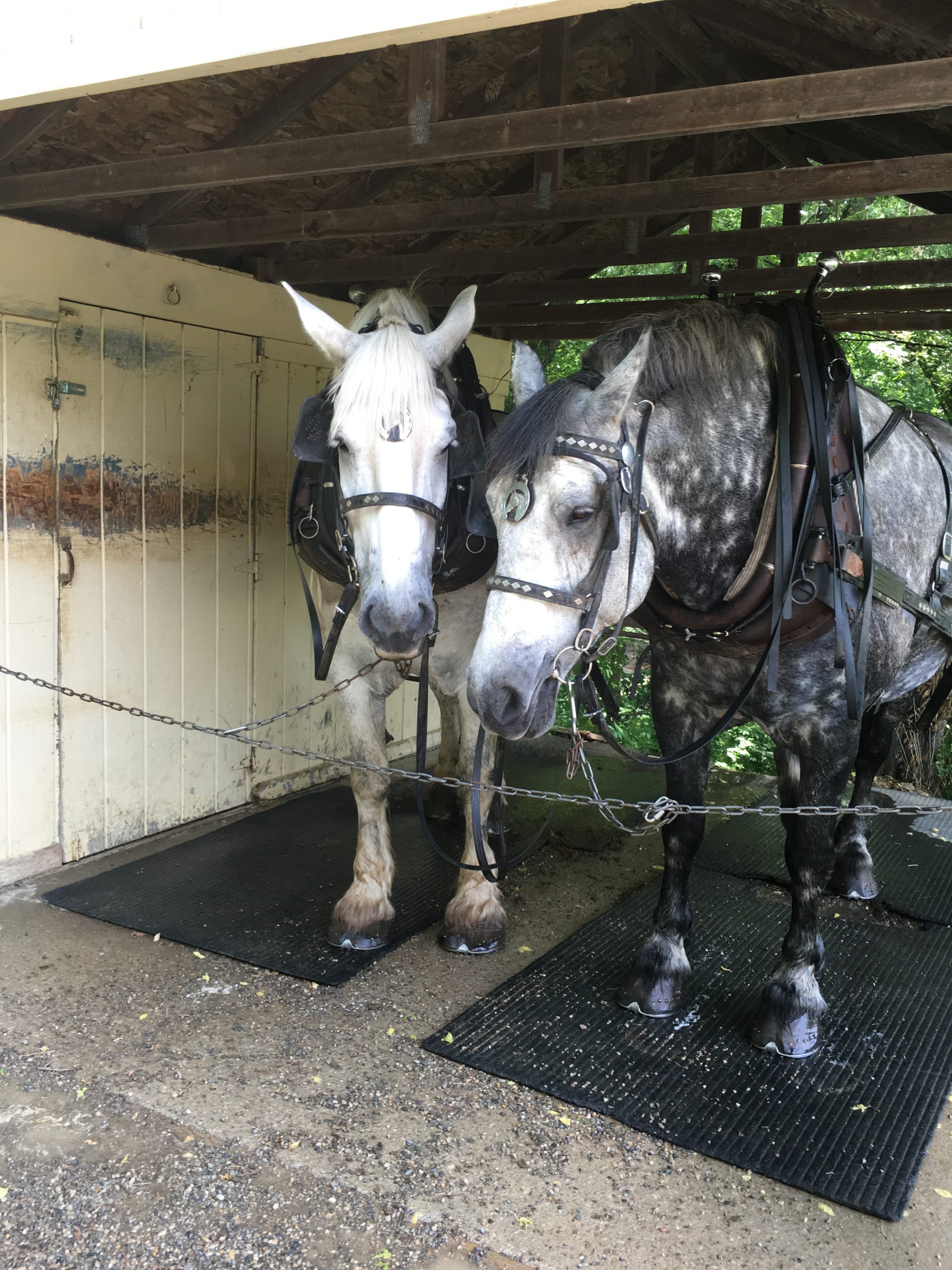
Draft horses or mules pulled the boats while “hoggees” drove them to pull the barges along Mudport Basin, a small section of the Walhonding Canal. It was their job to ensure the horses did not fall into the canals.
The helmsman would remain aboard the boat to steer it with the tiller, a long piece of wood which was connected to the rudder.
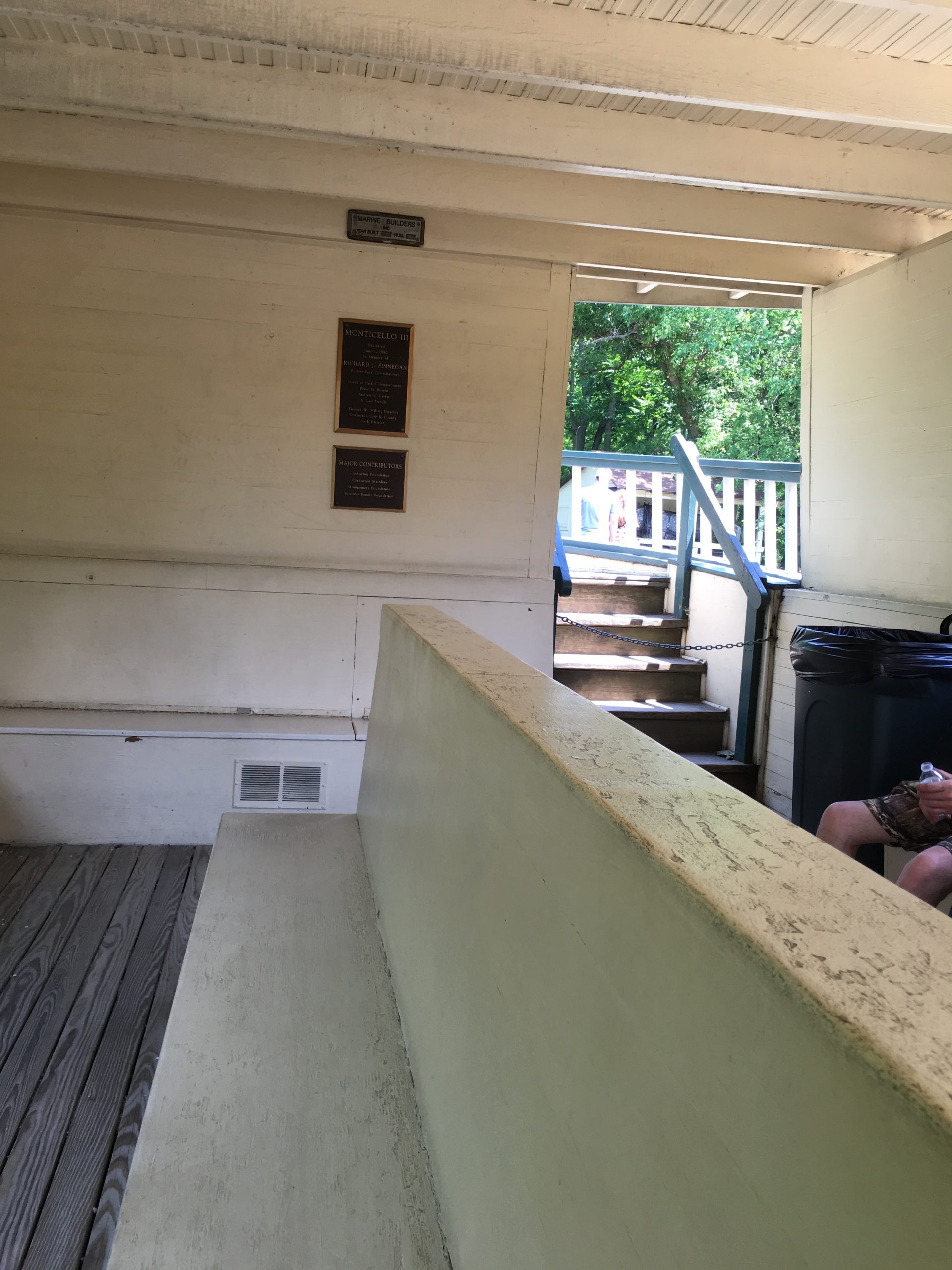
I descended the short set of stairs and found a bench at the front of the boat. Looking out onto the green murky water, I could see dragonflies and water striders. Bubbles reached the top of the water and a fish or two would appear at the top, then seem to dive below to catch some shade from the boat.
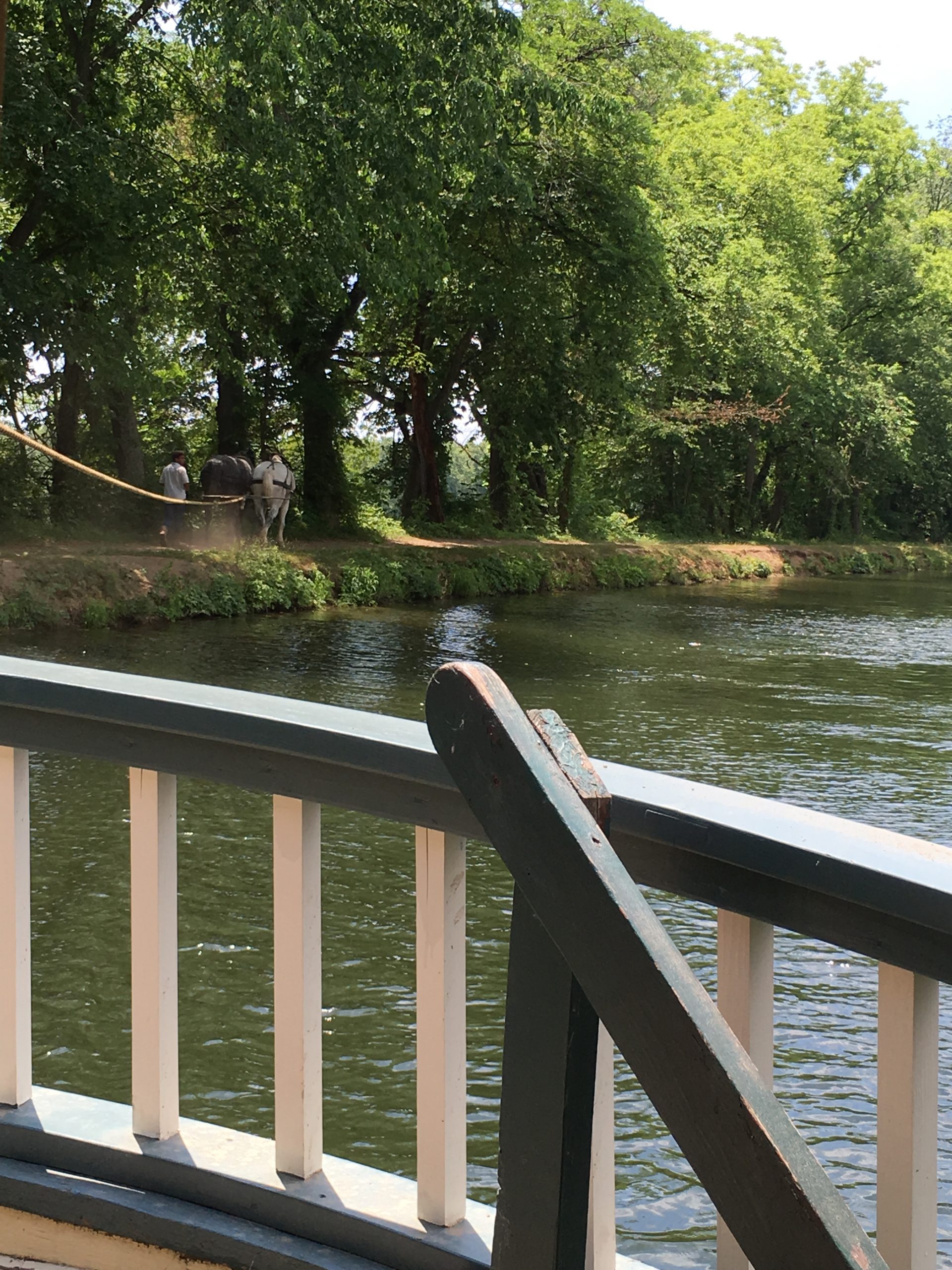
We were free to walk around the boat until launch. I stood towards the front thinking about the 305 miles it would have taken to reach the Cuyahoga Valley. I imagined families and children lining the path to welcome the incoming goods and feeding the draft horses a carrot or two.
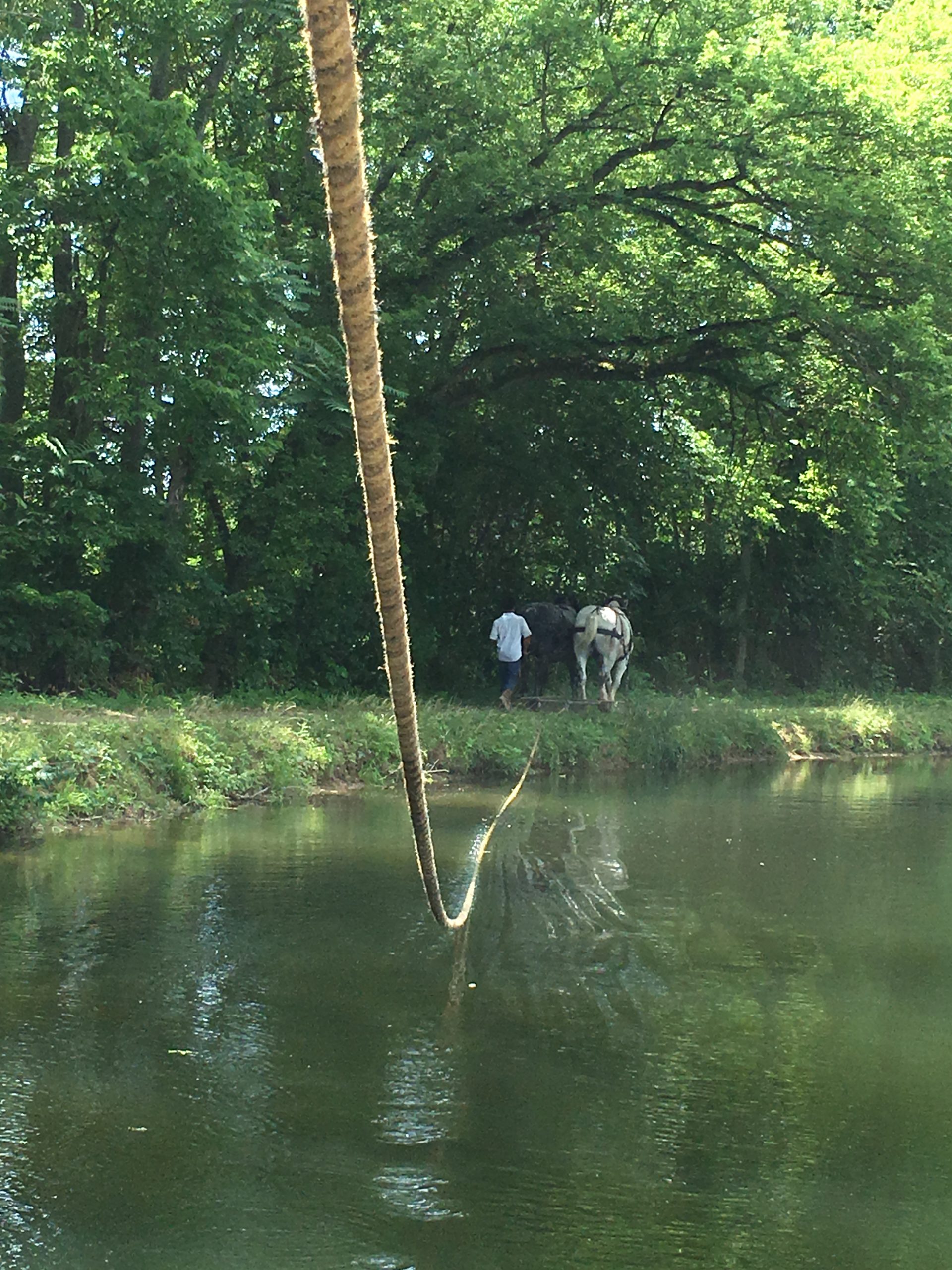
The horses had taken a small rest and were watered to prepare for the next set of guests. The weather was a beautiful seventy degrees, with a gentle breeze rustling the trees.
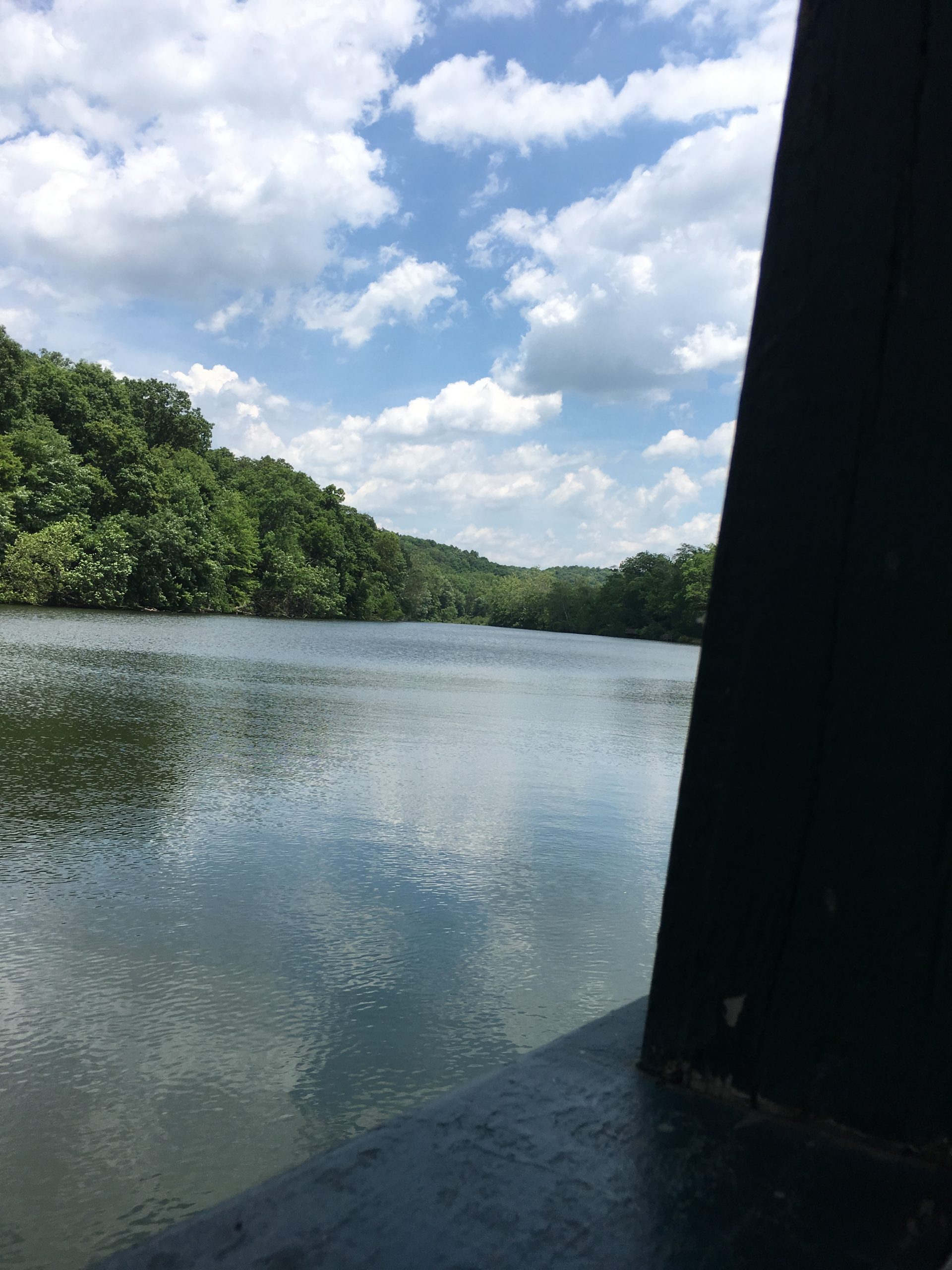
The Monticello weighs in at 25 tons and measures 74 feet long and 14 1/2 feet wide. Slowly drifting its way down the canal, we learned from the Captain of the Monticello that the canal measures 26 to 40 feet wide and would have taken about 80 hours to ride from start to finish. Luckily today we would be taking a 45 minute ride.
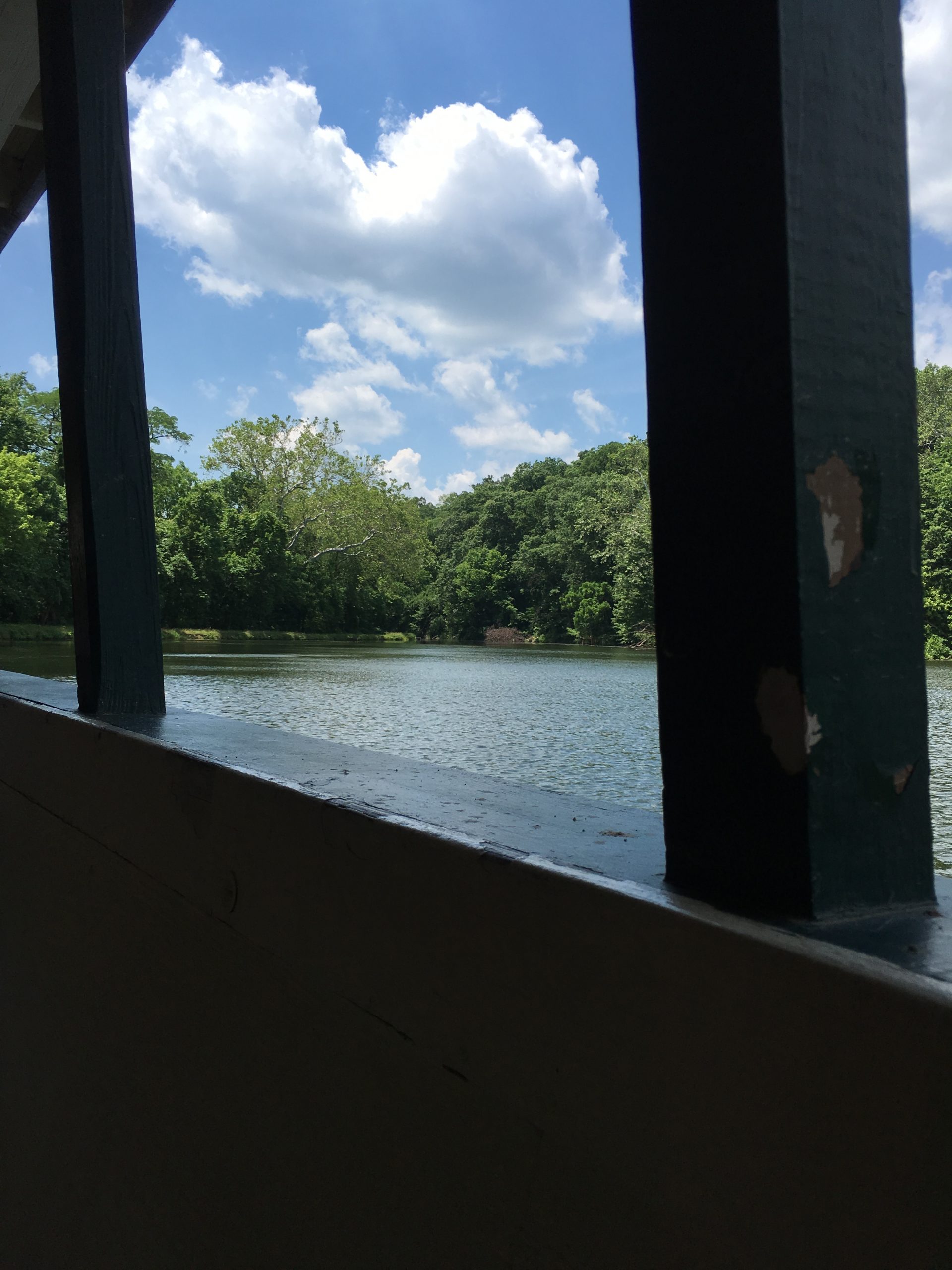
He also explained that the Canal was dug by hand and took seven years to complete.
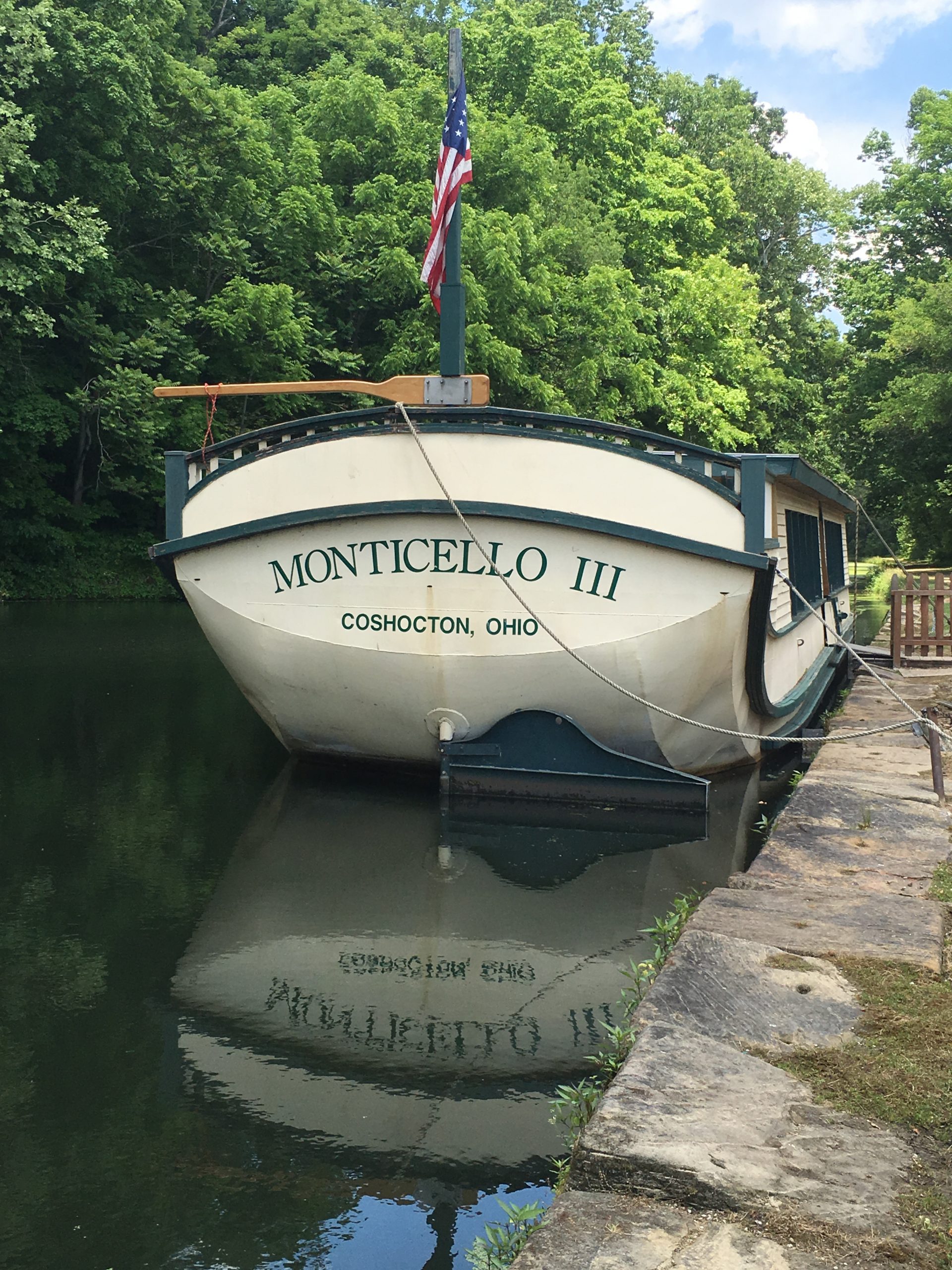
Roscoe became the fourth largest wheat port along the 350-mile canal system and was a thriving town until the 1860s. The canal continued to operate even as railroads were increasing in popularity until the Great Flood of 1913, swept parts of the town away.
With the vision of local businessman, Edward Montgomery, we can appreciate Roscoe Village as a beautiful reminder of the Canal era and its historical significance. In 1968, the Toll House was the first structure to undergo restoration. Montgomery is credited for the preservation and revitalization of Roscoe Village with his vision of building a “living museum so that people of the 20th century…could enjoy” and has become quite the tourist destination.